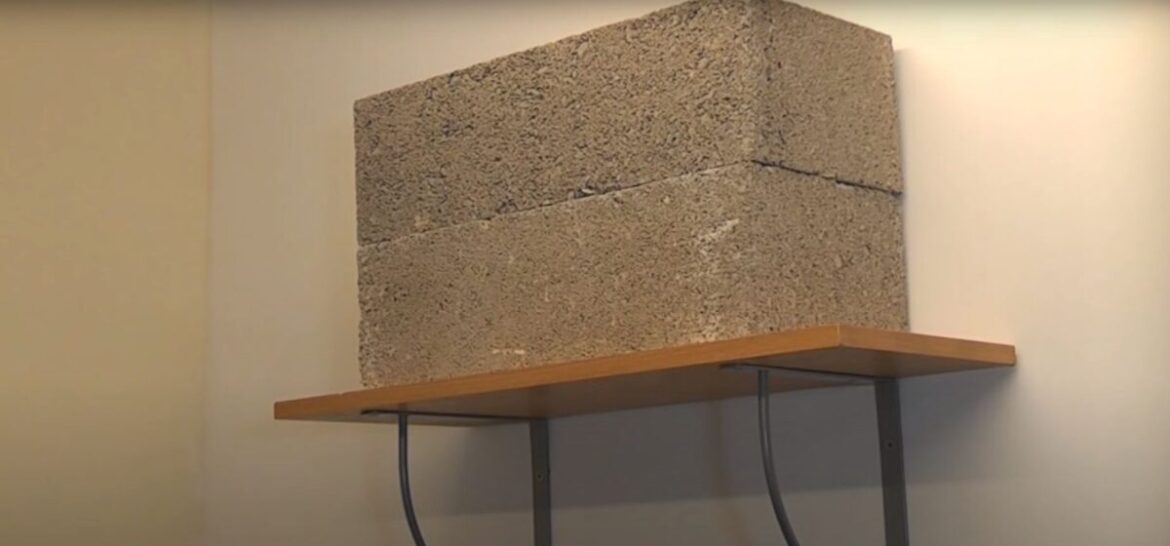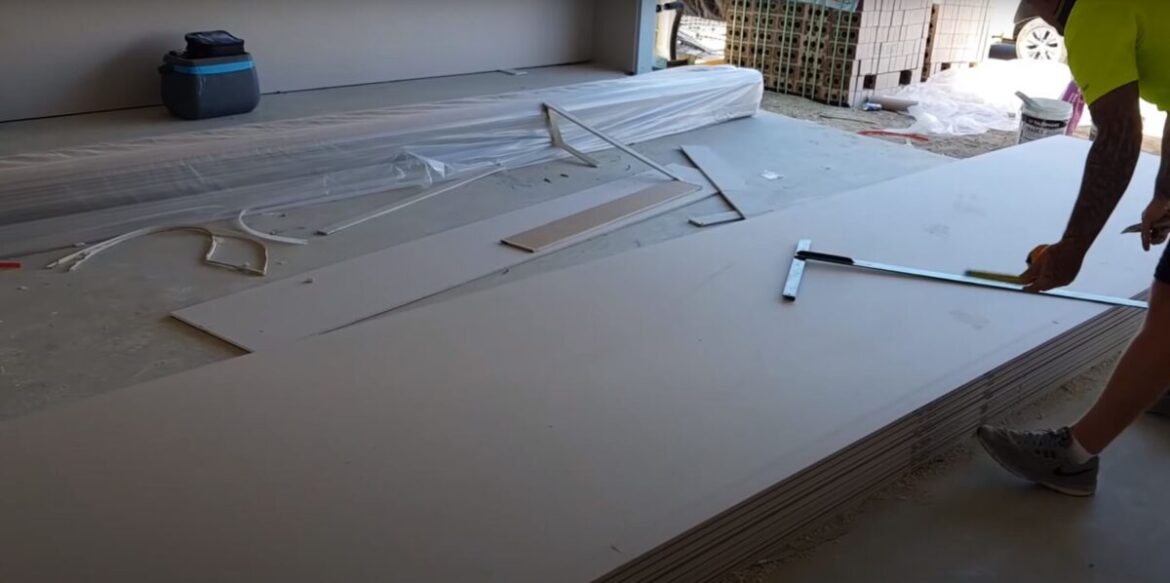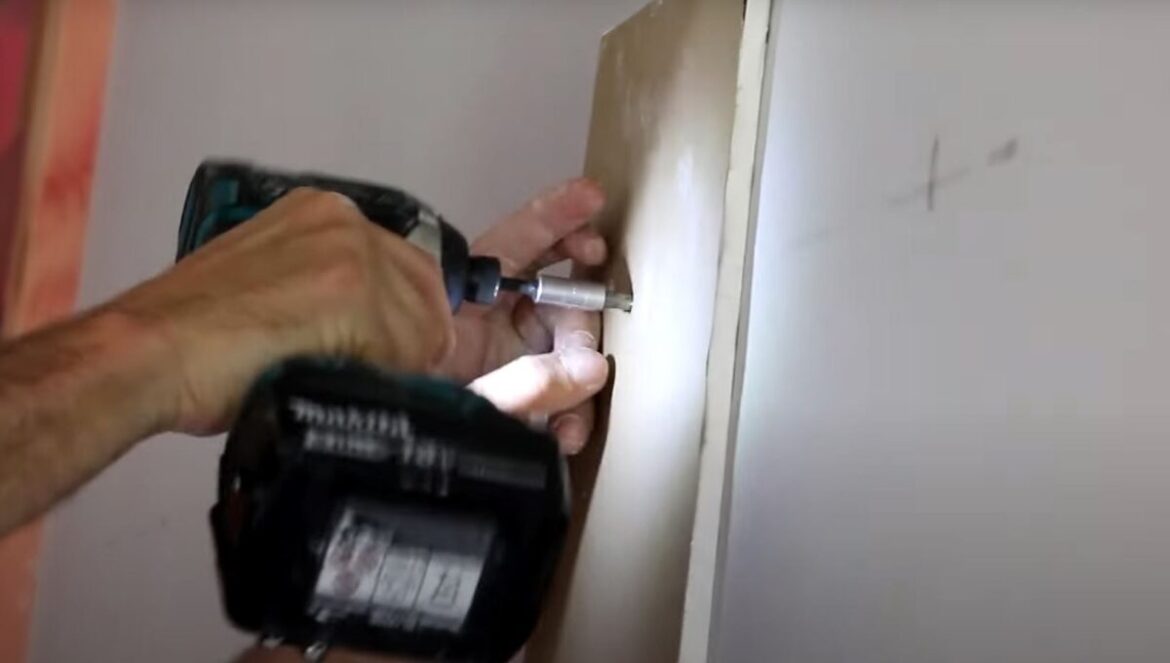How Much Weight Can GIB Board Hold?
GIB Board: Deciphering Its Weight Capacity
A Material Trusted Throughout Auckland
GIB board, widely recognized in the construction realm, has become a favoured choice among Aucklanders, especially in regions like Parnell and Remuera. Its versatility makes it an ideal component for numerous applications in residential and commercial settings. One prevalent question revolves around its ability to bear weight. Let’s delve deeper.
GIB Board Composition: The Basics
To understand its weight-bearing capabilities, it’s essential first to break down its composition. GIB board, commonly referred to as plasterboard or drywall in other parts of the world, is primarily constructed from gypsum sandwiched between two paper layers. This particular composition ensures a balance between durability and flexibility.
GIB Board Categories and Their Weight Capacities
Various GIB board types serve different purposes, each with its weight-bearing properties.
- Standard GIB Board: The everyday board found in many homes. Its weight-bearing capacity is suitable for standard fixtures like framed photos, clocks, and other lightweight items.
- GIB Braceline: Renowned for its bracing capabilities, this board is sturdier and designed to provide structural strength to buildings. Its weight-bearing capacity is significantly higher.
- GIB Aqualine: Specifically formulated for wet areas like bathrooms and kitchens, it has a weight capacity similar to the standard GIB board but offers resistance to moisture.
- GIB Fyreline: As the name suggests, this board is designed for fire resistance. Its weight-bearing capacity aligns closely with the standard board but boasts an enhanced ability to retard fire spread.
Health and Safety Considerations
As with any construction material, understanding and respecting the weight limits is pivotal for safety. Exceeding the recommended load on a GIB board can lead to structural issues, including sagging, cracking, or, in worst cases, the board coming off the wall. This is especially vital to remember when installing heavier fixtures like large mirrors, shelves bearing heavy items, or mounted televisions. Always ensure fixtures are anchored into the studs behind the GIB board to ensure maximum weight-bearing capacity.
Exceptional Cases: Going Beyond the Norm
While GIB boards have general weight capacities, these can vary based on:
- Board Thickness: A thicker board generally offers a higher weight-bearing capacity.
- Stud Spacing: The closer the studs are spaced, the greater the weight distribution, enhancing the weight the GIB board can carry.
- Anchor Types: Using appropriate anchors designed for GIB can drastically increase the weight-bearing ability.
Comparison of GIB Types in Auckland
| GIB Type | Benefits | Disadvantages | Primary Use | Material Ingredients | Weaknesses | Weight Bearing Capacity | Mitigating Measures |
| Standard | Versatile, cost-effective | Not moisture or fire-resistant | General walls, ceilings | Gypsum, paper | Can sag if overloaded | Suitable for lightweight fixtures | Ensure fixtures are anchored to studs |
| Braceline | High strength | Slightly more expensive | Structural bracing | Reinforced gypsum, paper | Heavy, requires more support during installation | Higher than standard | Ensure closer stud spacing |
| Aqualine | Moisture-resistant | Not for heavy weight-bearing | Wet areas like bathrooms | Gypsum, moisture-resistant paper | Can deteriorate if continuously soaked | Similar to standard | Ensure good ventilation to prevent prolonged moisture exposure |
| Fyreline | Fire-resistant | Costlier than standard | Fire-rated walls | Gypsum, fire-retardant paper | Can be slightly heavier | Similar to standard | Use in combination with fire-resistant insulation |
The GIB Board Decision in Auckland
For Auckland residents considering GIB board for their homes or businesses, whether in bustling Parnell or serene Remuera, understanding the weight capacities is essential for both aesthetics and safety. If unsure about the right GIB board for your needs or the weight it can hold, consider seeking advice from Auckland GIB fixing professionals like Your Plasterers Auckland, ensuring your walls remain not only beautiful but also safe and durable for years to come.
Frequently Asked Questions about GIB Board
What is GIB board made of?
GIB board primarily consists of gypsum sandwiched between two layers of paper, making it both durable and flexible.
Is GIB board the same as drywall?
Yes, GIB board is commonly referred to as plasterboard or drywall in other parts of the world.
How much weight can standard GIB board hold?
Standard GIB board is suitable for lightweight fixtures like framed photos and clocks. For heavier items, ensure they are anchored into the wall studs.
Is there a moisture-resistant GIB board?
Yes, GIB Aqualine is specifically designed for wet areas like bathrooms and kitchens, offering moisture resistance.
How do I increase the weight-bearing capacity of GIB board?
Using appropriate anchors, ensuring closer stud spacing, and opting for a thicker board can all enhance the weight-bearing ability of GIB board.
Which GIB board is best for fire resistance?
GIB Fyreline is designed for fire resistance, retarding the spread of fire more effectively than standard boards.
Can I use GIB board for ceilings?
Yes, standard GIB board is suitable for ceilings. However, always ensure that fixtures and fittings are appropriately anchored for safety.
What are the main risks of overloading GIB board?
Overloading can lead to structural issues such as sagging, cracking, or the board detaching from the wall.
How do I know if my fixture is too heavy for the GIB board?
Always refer to the manufacturer’s guidelines for weight capacities. If unsure, consult a professional.
Are there eco-friendly GIB board options available?
Yes, some manufacturers produce GIB board using recycled materials or sustainable practices. It’s best to check with suppliers.
How long does GIB board last?
With proper installation and care, GIB board can last many years. Its lifespan can be affected by factors like moisture exposure or physical damage.
What’s the difference between GIB Braceline and standard GIB board?
GIB Braceline is renowned for its bracing capabilities and is sturdier, providing structural strength to buildings.
How do I repair damaged GIB board?
Small damages can be repaired with joint compound or patches. For larger damages, replacing the affected section might be necessary.
Can GIB board be painted or wallpapered?
Yes, GIB board can be finished with paint, wallpaper, or texture, depending on your aesthetic preferences. Ensure the surface is properly primed for best results.
Essential Insights on GIB Board
Composition of GIB Board
GIB board is predominantly made of gypsum, encased in layers of paper, balancing strength and flexibility.
Versatility in Naming
Known as plasterboard or drywall in various regions, GIB board remains a preferred choice in Auckland’s construction industry.
Weight Bearing Capacities
While suitable for light fixtures, anchoring heavy items into wall studs is crucial for safety on GIB board.
Specialised GIB Boards Exist
For moisture-prone areas, GIB Aqualine provides resistance, while GIB Fyreline offers enhanced fire resistance.
Increasing Load Capacities
The weight-bearing ability can be amplified by employing the right anchors, opting for denser stud spacing, or choosing a thicker board.
Overloading Risks
Exceeding weight recommendations can result in structural concerns such as sagging, potential cracks, or even detachment from the wall.
Eco-friendly Options
Certain manufacturers emphasize sustainability, offering GIB board options that utilise recycled materials.
Durability of GIB Board
With apt care and installation, GIB board’s longevity is impressive, although factors like moisture or physical trauma can affect it.
Diversity in GIB Board Range
GIB Braceline stands out for its enhanced bracing capabilities, ensuring added structural integrity.
Finishing GIB Board
GIB board surfaces can be transformed with paint, textures, or wallpaper after the right priming process.
What are the Different Types of Gib?
The Gib Spectrum: Navigating Your Options in Auckland
Understanding the Gib Landscape
If you’re embarking on a home renovation in Auckland and Gib fixing is on the cards, you’ll want to familiarise yourself with the array of Gib types available. Gib, commonly known as plasterboard or drywall in other parts of the world, comes in various types, each with its unique characteristics and uses.
Standard Gib Board: The All-Rounder
- Features: This is the most commonly used Gib. It’s grey paper-faced and is suitable for walls and ceilings.
- Advantages: Versatility and cost-effectiveness.
- Limitations: Not ideal for high moisture or high impact areas.
Gib Aqualine: The Moisture Magnet
- Features: This Gib has a blue paper face, specifically designed for wet areas like bathrooms and laundries.
- Advantages: Offers high moisture resistance.
- Limitations: Slightly more expensive than the standard board.
Gib Noiseline: Auckland’s Urban Shield
- Features: A high-density core makes this plasterboard ideal for reducing noise, especially in bustling Auckland suburbs.
- Advantages: Offers acoustic insulation.
- Limitations: Heavier than other types and might require additional framing support.
Gib Fyreline: Safety First
- Features: Built with a pink paper face, this Gib is developed for areas that need fire resistance.
- Advantages: Offers fire protection, especially important for kitchen areas or garages.
- Limitations: Costlier than standard Gib board.
Navigating Auckland’s Suburb Specificities
Given Auckland’s diverse neighbourhoods, your Gib fixing approach might vary. For instance, Albany, with its contemporary housing developments, might see a higher demand for Gib Noiseline, ensuring urban noises stay out. In contrast, in the scenic coastlines of Hobsonville, residents might opt for Gib Aqualine in their beachfront properties, given the moist environment.
Auckland Council Bylaws and Exterior Plastering
When it comes to exterior plastering or solid plastering, Auckland Council has specific regulations, especially concerning buildings’ weathertightness. In suburbs like Albany and Hobsonville, adherence to these codes is paramount to ensure the durability and safety of your Gib work. Always engage with a professional before embarking on significant plastering projects, ensuring compliance with local regulations.
The Gib Fixer’s Toolkit
Fixing Gib isn’t just about the board; it’s also about having the right tools:
- Broadknives: Essential for applying and smoothing joint compound.
- Taping Knife: Helps in taping the joints.
- Sanding Pads: For smoothing out the finished surface.
- Joint Compound: Often referred to as “mud”, it’s used to finish the joints and screw holes.
Decoding Gib Types: A Quick Table
| Gib Type | Advantages | Limitations | Best Use Cases |
| Standard Gib Board | Versatile, Cost-effective | Not for moist/impact areas | General walls/ceilings |
| Gib Aqualine | Moisture-resistant | Slightly costlier | Bathrooms/Laundries |
| Gib Noiseline | Acoustic insulation | Needs added support | Urban homes/offices |
| Gib Fireline | Fire-resistant | More expensive | Kitchens/Garages |
Engage the Professionals
As enticing as a DIY Gib project sounds, the intricacies involved — from selecting the appropriate type of board to ensuring accurate fixing and finishing — make this task more complex than it might appear at first glance. Engaging a professional Gib fixing contractor in Auckland not only ensures a seamless finish but also guarantees adherence to local bylaws and regulations, ultimately ensuring peace of mind in your home renovation journey. Get in touch with Your Plasterers Auckland today.
Unravelling GIB: Frequently Asked Questions
What is the standard Gib board used for?
The standard Gib board, with its grey paper-face, is versatile and commonly used for general walls and ceilings in homes and offices.
How is Gib Aqualine different from the standard board?
Gib Aqualine is designed specifically for wet areas such as bathrooms and laundries. Its blue paper face distinguishes it, and it offers high moisture resistance.
When should I consider using Gib Noiseline?
Gib Noiseline is ideal for places where noise insulation is crucial. If you’re located in bustling parts of Auckland or require soundproof rooms, this high-density plasterboard is your best bet.
What’s unique about Gib Fireline?
Gib Fireline is crafted for areas that require fire resistance. Its pink paper face stands out, and it’s especially suitable for kitchens, garages, or areas adjacent to fireplaces.
Is there a type of Gib for high-impact areas?
Yes, there are specific Gib boards designed for high-impact areas, like rumpus rooms or garages, which can withstand more wear and tear than standard boards.
How do I recognise which type of Gib has been used in my home?
Often, the colour of the paper face can indicate the type of Gib. For instance, standard Gib has grey paper, Aqualine is blue, and Fireline is pink.
Can I use Gib Aqualine for my entire home?
While you can, it might not be cost-effective. Gib Aqualine is designed specifically for wet areas. Using it throughout the house would be over-specification and could increase your costs unnecessarily.
How often should Gib be replaced?
Gib doesn’t have a specific “expiry date”. Its longevity depends on factors like moisture exposure, physical damage, or structural issues. Regular inspections can help gauge if replacement is required.
Is there an eco-friendly Gib option?
Yes, there are Gib boards available that are manufactured with sustainability in mind, using recycled materials and producing reduced carbon footprints.
How does Auckland’s climate impact my Gib choice?
Auckland’s varying climates, especially in coastal areas, can influence your Gib choice. For instance, properties near the sea might benefit more from moisture-resistant Gib due to the saline environment.
Are there any Auckland-specific regulations regarding Gib installation?
While there are building codes and regulations concerning plasterboard installation, it’s always recommended to check with local councils or engage a professional in Auckland to ensure full compliance, especially in areas like Albany and Hobsonville where specific bylaws might apply.
Is GIB Board Flammable?
Unravelling Gib Board: The Science Behind Its Flammability
What’s Behind the Wall? The Basics of Gib Board
Gib board, often referred to as plasterboard or drywall in other parts of the world, is a standard material used for interior wall and ceiling linings. Comprised primarily of gypsum plaster pressed between thick sheets of paper, it’s become a trusted material in many Auckland homes, from the buzzing streets of Ponsonby to the tranquil lanes of Remuera.
Is Gib Board Really Flammable?
While it may seem counterintuitive, the primary component of gib board, gypsum, is actually non-flammable. Gypsum contains water molecules bonded within its structure. When exposed to high temperatures, this water is gradually released as steam, preventing the board from catching fire. This inherent characteristic makes gib boards a good fire-resistant building material.
The Science of Gypsum
Gypsum is a mineral composed of calcium sulfate dihydrate. When exposed to fire or high temperatures, the chemically combined water in gypsum is slowly released as steam, ensuring the temperature of the board remains under control. This phase change and the energy consumed in the process give gib board its fire-resistant property. However, the outer paper layer can be a combustible material, which means while the core isn’t flammable, the surface can catch fire if not treated properly.
Beyond the Basic: Varieties of Gib Board
Auckland’s construction scene boasts a variety of gib boards tailored to specific needs:
Standard Gib Board:
- Use Cases: Suitable for general interior use.
- Material Ingredients: Gypsum core with paper lining.
- Weaknesses: Paper surface can be combustible.
- Flammable Rating: Low-Medium, due to the paper surface.
- Mitigating Measures: Ensure minimal exposure to open flames; apply fire-resistant paint or coating.
Fire-Resistant Gib Board
- Use Cases: Ideal for use in fire-prone areas or as firewalls.
- Material Ingredients: Gypsum with added fire-resistant materials.
- Weaknesses: Slightly more expensive.
- Flammable Rating: Low.
- Mitigating Measures: Used in conjunction with other fire-resistant materials.
Moisture-Resistant Gib Board:
- Use Cases: Best for bathrooms and kitchens where moisture is prevalent.
- Material Ingredients: Gypsum with water-resistant additives.
- Weaknesses: Not suitable for complete water immersion.
- Flammable Rating: Low-Medium.
- Mitigating Measures: Ensure good ventilation and avoid exposure to open flames.
Health and Safety Aspects
Your Plasterers Auckland always emphasizes that regardless of the type of gib board used, safety measures must be in place. While fire-resistant gib board provides an added layer of protection, it’s crucial to combine it with other fire-resistant measures like alarms and extinguishers. Additionally, during the installation or renovation process, be mindful of the dust produced from cutting or shaping the board, as prolonged inhalation can be harmful.
Exceptions to Gib Board’s Fire Resistance
Gib board, with its foundational gypsum core, indeed provides some level of fire resistance. But just like any material, it has its limits. When making decisions about building or renovating homes in Auckland, whether it’s a trendy Ponsonby loft or a classic Remuera villa, understanding these limitations is crucial.
Prolonged Exposure to High-Intensity Fires
While the gypsum core can fend off average household fires by releasing water in the form of steam, extreme temperatures from high-intensity fires can be a game-changer. If a fire burns hot and long enough, even the water in the gypsum can eventually evaporate. Once that happens, the structural integrity of the gib board can be compromised.
Surface Combustibility
The outer layer of a standard gib board, usually made of paper, can catch fire. When exposed to direct flames, this layer can ignite and allow the fire to spread, particularly if there are other combustible materials nearby.
Improper Installation
The way gib board is installed can also influence its fire resistance. Boards that aren’t properly secured or have gaps can provide avenues for flames to find their way behind the board. Additionally, spaces or voids behind the gib board can act as chimneys, allowing heat and flames to rise and spread more quickly.
Presence of Other Combustibles
The fire resistance of a gib board wall or ceiling can be adversely impacted if it’s combined with highly flammable materials. For instance, if insulation behind the gib board is combustible, or if flammable adhesives are used excessively, they can compromise the fire-resisting properties of the gib board.
Damaged or Compromised Boards
Over time, gib boards might suffer from wear and tear, moisture damage, or other structural compromises. Any damage can diminish the board’s fire-resistant properties, making it more susceptible to catching fire. Regular inspections and maintenance are pivotal in ensuring that the boards retain their safety characteristics.
In the ever-evolving landscape of Auckland’s construction scene, understanding these exceptions is more than just technical knowledge. It’s about ensuring homes are both beautiful and safe. Collaborating with experts like those at Your Plasterers Auckland can offer not just peace of mind, but also practical insights into making the best choices for your living spaces.
Final Thoughts: The Right Gib Board for Your Auckland Home
Deciding on the type of gib board that fits the specific needs of your property requires a solid understanding of its characteristics and properties. With expert guidance from professionals, such as those at Your Plasterers Auckland, ensuring the safety and aesthetics of your home becomes a seamless process.
Table: Gib Board Varieties in Auckland
| Gib Board Type | Benefits | Disadvantages | Use Cases | Material Ingredients | Weaknesses | Flammable Rating | Mitigating Measures |
| Standard | Economical; Easy to install | Combustible paper surface | General interior use | Gypsum with paper lining | Combustible paper surface | Low-Medium | Fire-resistant paint/coating |
| Fire-Resistant | Enhanced fire protection | Slightly costlier | Fire-prone areas | Gypsum with fire-resistant materials | Higher cost | Low | Use with other fire-resistant materials |
| Moisture-Resistant | Resists moisture and mould | Not for full immersion | Bathrooms, kitchens | Gypsum with water-resistant additives | Not immersion-friendly | Low-Medium | Good ventilation; avoid open flames |
Frequently Asked Questions on Gib Board’s Flammability
Is the core material of gib board flammable?
No, the primary component of gib board, gypsum, is non-flammable. It contains water molecules that release as steam when exposed to heat, giving gib board its fire-resistant property.
Can the outer surface of gib board catch fire?
Yes, the paper lining on standard gib board can catch fire when directly exposed to flames. However, there are fire-resistant gib boards available that offer added protection.
How do fire-resistant gib boards differ from standard ones?
Fire-resistant gib boards contain additional fire-retarding materials mixed with the gypsum. This enhances the board’s resistance to fire compared to the standard variety.
Do damaged gib boards pose a higher fire risk?
Yes, damaged or compromised gib boards can have reduced fire-resistant properties. Any wear, tear, or moisture damage can make them more susceptible to fire.
Does the installation method impact gib board’s fire resistance?
Definitely. Improperly installed gib boards, with gaps or spaces, can provide pathways for flames and heat, reducing their effectiveness as a fire barrier.
Are there other materials used in conjunction with gib board that can impact its fire resistance?
Yes, if gib board is paired with combustible materials like certain types of insulation or flammable adhesives, it can compromise the overall fire resistance of the wall or ceiling.
How often should gib boards be inspected for potential fire risks?
It’s advisable to inspect gib boards during regular home maintenance checks, at least annually. Look out for any damages, wear, or moisture issues that might reduce its fire resistance.
Key Takeaways: Gib Board and Fire Safety
Gypsum Core Offers Fire Resistance The primary ingredient in gib board, gypsum, has inherent fire-resistant properties due to the water molecules it contains. When exposed to heat, these water molecules are released as steam, slowing down the spread of fire.
Surface Material Can Be Combustible While the core might be resistant to fire, the paper surface of standard gib boards can ignite if exposed directly to flames. This highlights the importance of considering the entire board structure when evaluating fire risks.
Installation Matters Proper Gib board installation is paramount. Gaps, improperly secured boards, or spaces behind the gib board can reduce its effectiveness as a fire barrier, emphasizing the importance of hiring professionals for GIB board installation and GIB Fixing.
Not All Gib Boards Are Equal There are various types of gib boards available, with some specifically designed to be more fire-resistant than standard ones. When safety is a primary concern, opting for these specialized boards can make a difference.
Regular Maintenance Enhances Safety Like all building materials, gib boards can degrade over time. Regular inspections and addressing any wear, tear, or damage promptly will ensure that the boards retain their fire-resistant properties.



